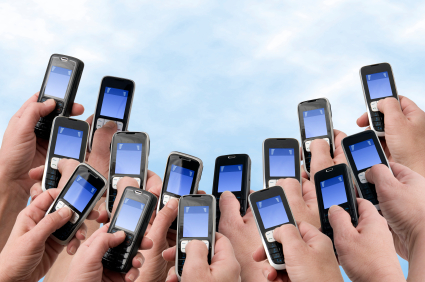You are viewing our site as a Broker, Switch Your View:
Agent | Broker Reset Filters to Default Back to ListIntegrating the Second Screen Into Your Real Estate Strategy
February 19 2013
Guest contributor Delta Media Group says:
 Did you watch the Super Bowl? Did you do anything else while you did? How about the Grammys?
Did you watch the Super Bowl? Did you do anything else while you did? How about the Grammys?
Think for a minute about how you watch TV. How often do you find yourself entirely engaged by the show you're watching?
Odds are, you may find yourself getting distracted by texts or emails. Maybe you don't even give the television half your attention. Maybe it's just background noise to what you're actually doing on your laptop, tablet or smartphone.
The fact of the matter is most people now have another screen in front of them while watching what was always their main (or only) screen—the television screen. That, of course, means the TV is getting less of your focus, while everything else is getting more.
TV shows and commercials have even caught on to this trend, and many frequently promote hashtags and social accounts during their commercials and TV programs.
The Super Bowl was one of the most historic examples of this occurrence, and may change how viewing takes place forever. CBS looked to earn around $12 million from its second screen experience during the game, and a few companies made headlines by live-engaging with their audiences through real-time social updates that pertained to occurrences during the game.
The first big example was the blackout, which happened unexpectedly during the Super Bowl. Oreo was quick to jump on board with a photo, and Walgreens and Audi also took advantage, along with a few others.
Oreo was back at it again Sunday when Justin Timberlake took the Grammys stage for the first time in four years. Oreo and Campbell's both released memes playing on Timberlake's new "Suit and Tie" song while he performed it.
The Grammys helped bump this engagement themselves by aggressively promoting their Twitter hashtag during the show. At one point the hashtag had more than 200,000 tweets per minute, as viewers obviously took to talking about the show possibly as much as they watched it.
Social media parlays into a second screen environment because it allows viewers to discuss topics while watching them. They can monitor responses, chat with others and become a voice in a digital world when they might have never had the same opportunity at an in-person social gathering.
The second screen movement also means less people are paying attention to the expensive advertisements shown on TV. Companies spent $4 million per 30 seconds on Super Bowl ads and some didn't get the ongoing attention that Oreo was able to drive with little overhead on Twitter.
These are big examples, and not likely ones you're looking to leverage in your own personal, local marketing.
But they are the next phase of the long-discussed topic of SoLoMo (Social-Local-Mobile), and that is exactly where you want your business to live as a Digital REALTOR®, considering the massive adoption of mobile devices and growing trend toward mobile search and mobile real estate websites.
The Super Bowl is a huge, worldwide event. A local high school or college sporting event might better fit your market. The local news is another example you might look to leverage.
All open the door for you to better engage with your customers that might not be engaging with their TVs, even though they have them on in the background.
Your name might cross a consumer's cell phone via a tweet while that person is looking at homes on their laptop and watching a national television show. You probably couldn't or wouldn't pay to advertise on the show, but your marketing might have a much greater impact to that consumer than any of the multi-million dollar commercials did.
Social is about engagement and, as a real estate agent, your business is built on social connections. The first step is having all the integrated tools to succeed in your online marketing initiatives, and the next is leveraging them to build your online business.
To view the original article, visit the Delta Media Group blog.









